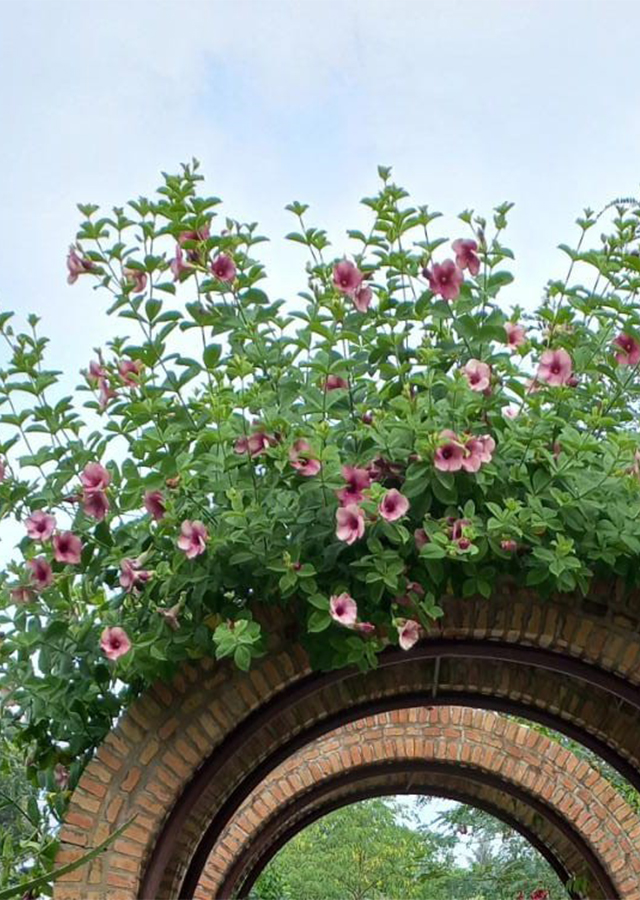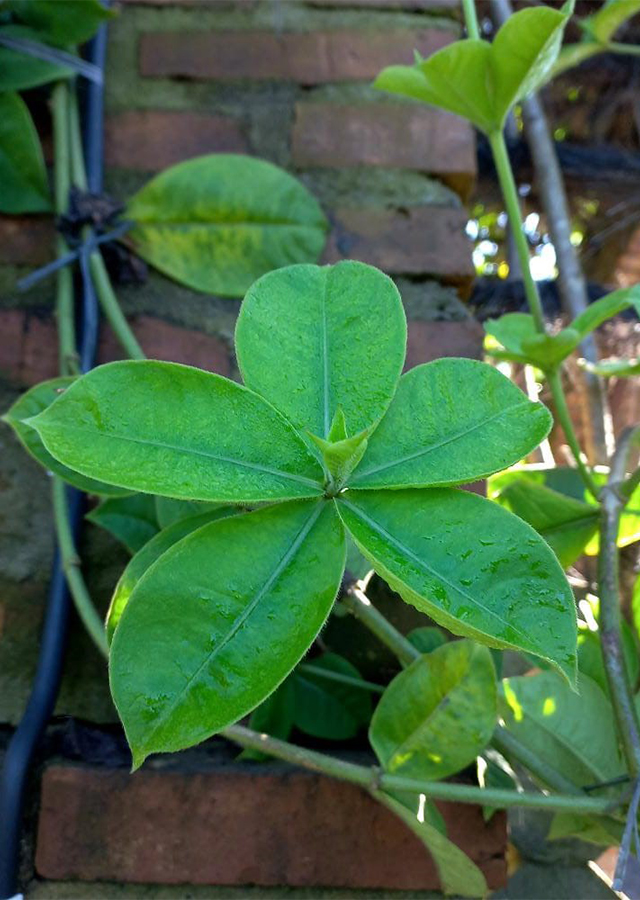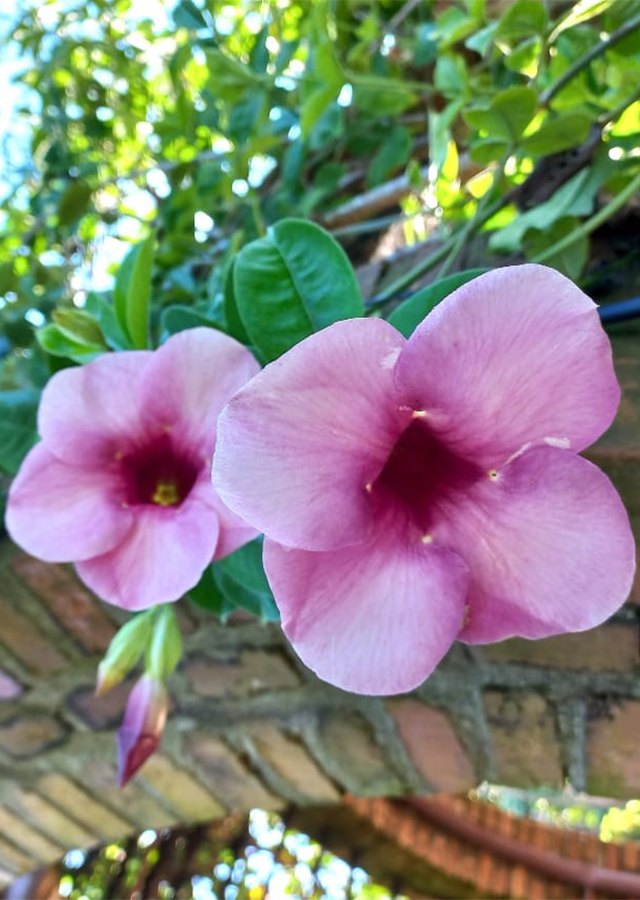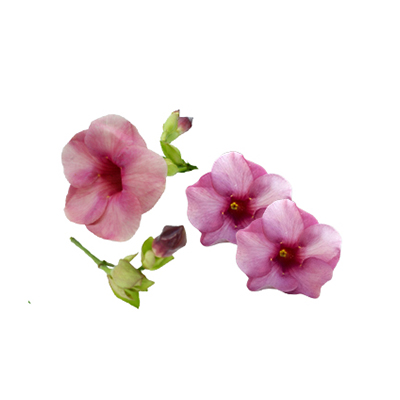Purple Allamanda
Allamanda blanchetti A.DC.
Apocynaceae
Location in our garden
Principal



Synonym
Allamanda violacea Gardner
Habitus
Shrubs. An evergreen, erect or weakly climbing shrub growing up to 3 metres tall, though usually smaller
Part Used
Leaves
Flowers
Roots
Stem
Growing Requirements
Full Sunshine
Habitat
Riverbanks
Forest
Terrestrial
Overview
Allamanda blanchetii is native to Brazil. This species has been introduced as an ornamental species and can be found cultivated in India, Singapore, Laos, Colombia, Puerto Rico, the Lesser Antilles (Saba) and on many islands in the Pacific region. The plant is sometimes gathered from the wild for local use in traditional medicine, and is also grown as an ornamental.
Vernacular Names
Alamanda-de-jacobina (Brazillian), Allamanda-roxa (Portuegese)
Agroecology
In Brazil, within its native distribution range, A. blanchetii grows in the dry forest locally known as the Caatinga, occurring on rocky outcroppings. It can also be found in secondary dry forests, mangrove swamps and lowland riverbanks. It is planted as an ornamental in gardens and parks and can be found naturalized in nearby disturbed areas and along roadsides. Prefers a well-drained but moisture retentive fertile soil and a position in full sun.
Morphology
- Stems - covered with bristle-like hairs.
- Leaves - green elliptic leaves, about 10 cm – 20 cm wide, are arranged in whorls of four. Leaves are hairy with acuminate apex and entire leaf margin.
- Flowers - terminally borne flowers are purplish pink to violet, 5 cm to 6.5 cm wide with a yellowish tube.
- Fruits - globose and spiny follicles containing numerous seeds.
- Seeds - flattened equipped with a membranous wing.
Cultivation
Propagated by seeds and cuttings of ripe wood.
Chemical Constituents
Polyphenols, flavonons, polysaccharides, terpenes, steroids and saponins.
Traditional Medicinal Uses
- The sap (latex) is cathartic and emetic when used in small doses, in larger doses it is poisonous.
- In traditional medicine, people use it to treat liver tumors, malaria, splenomegaly, and jaundice. Similarly, they use it to treat abscesses, ringworm, ulcers, and eczema.
- The flowers are very effective in preventing malaria and swelling of the spleen.
- The plant is also used as an antidote for poisoning and can treat dysentery.
Part Used
Reference Sources
- Fern, Ken. Useful Tropical Plants. (2021). Allamanda blanchetti. http://tropical.theferns.info/viewtropical.php?id=Allamanda+blanchetii. 19-10-21.
- Cabi. Allamanda blanchetti. https://www.cabi.org/isc/datasheet/25980468. 19-10-21.
- National Parks. Flora & Fauna Web. (2019). Allamanda blanchetti. https://www.nparks.gov.sg/florafaunaweb/flora/1/3/1302. 19-10-21.
- Santhi Online Plants. Allamanda blanchetti. https://www.santhionlineplants.com/product/allamanda-purple-violet/. 19-10-21.



